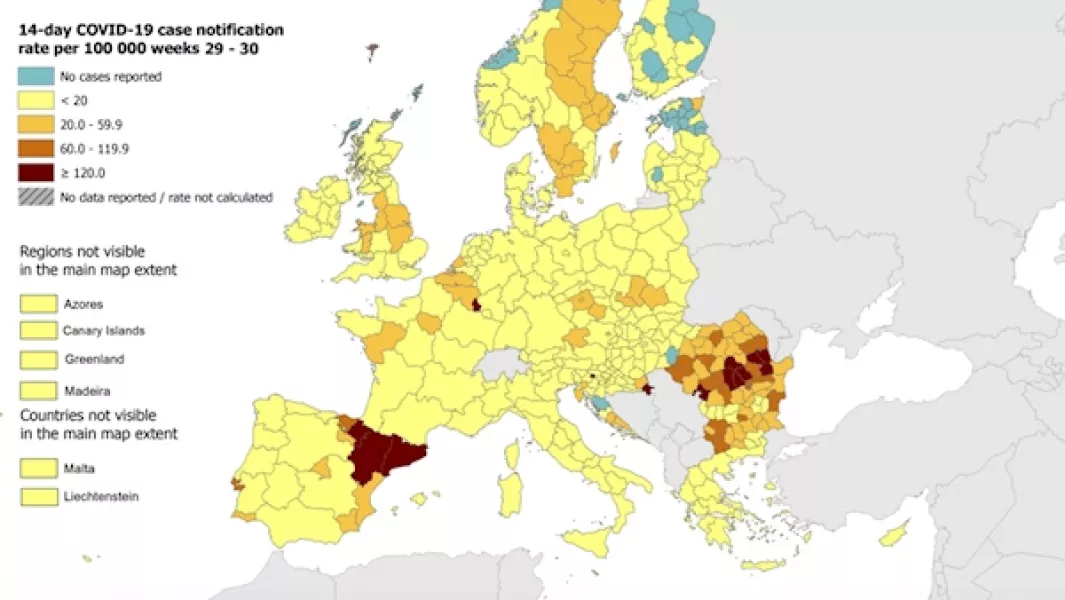Between July 15th and 28th, Ireland had 2.5 cases per 100,000 people, while Luxembourg has the highest incidence of the virus per 100,000 people, with a rate of 111.1.
This information is thought to be what decision-makers are taking into account when deciding which countries can or cannot be included on international travel lists.
The 15 countries originally included on Ireland's green list, when it was first published on July 23rd, had rates equal to or lower than the Republic according to the ECDC data, and updated information from the same source may be behind the decision to alter the list.
On Tuesday evening, the Government announced its decision to remove five countries from the original list; Cyprus, Malta, Gibraltar, Monaco and San Marino.
Removing these countries from the list means that travellers arriving in Ireland from these places will be required to quarantine for two weeks.
3372119
The higher rates in countries such as the UK, Spain and France, as illustrated above, may explain why they were left off the green list.
The updated data from the ECDC shows that rates of the virus in Cyprus and Malta have increased since the two-week period ending July 21st.
Information is not released for Gibraltar, Monaco and San Marino, however the inclusion of the three countries had been criticised as San Marino does not have an airport, and Gibraltar and Monaco can only be accessed via Spain and France.
The data from the ECDC, which examines cases on a fortnightly basis, shows that Ireland's rate per 100,000 people has been steadily increasing since the end of June.
The ECDC also examines the rate of cases by region, showing the Spanish area of Catalonia, which includes Barcelona, to be the worst affected region in Europe.

Catalonia has a rate in excess of 120 cases per 100,000 people.







